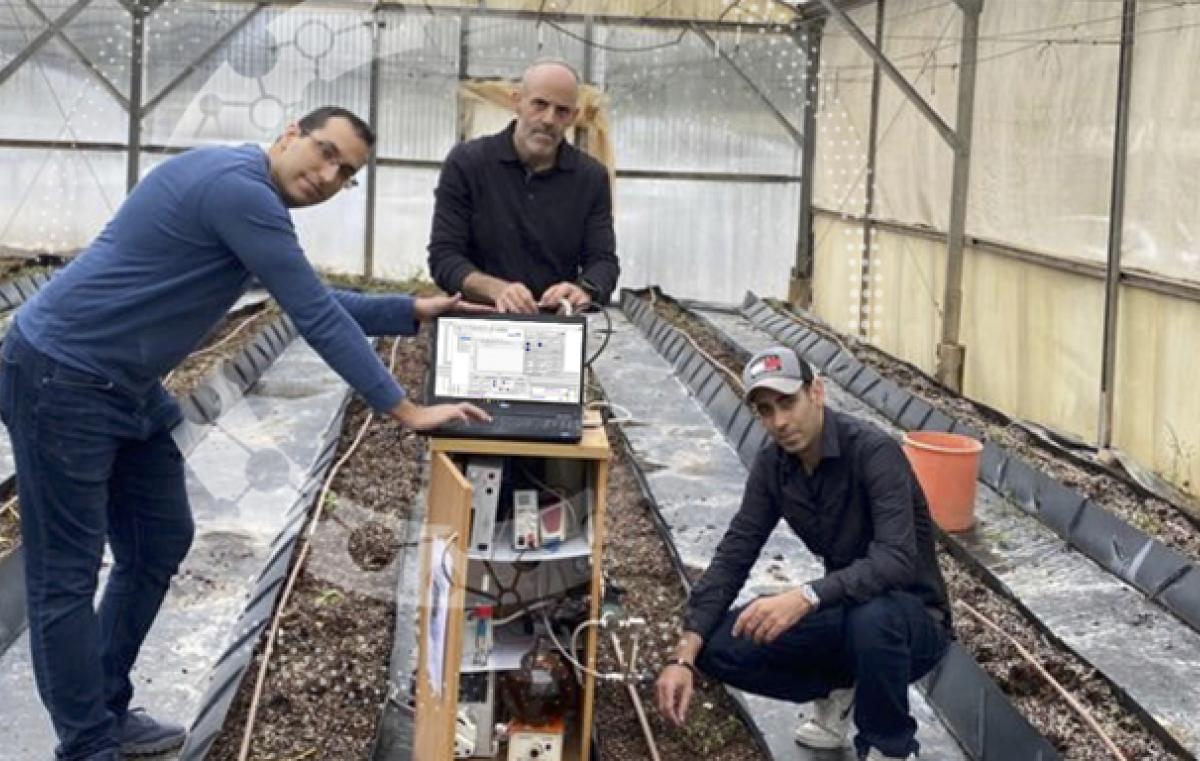Reducing CO2 in the Air
Prof. Doron Aurbach of the BIU Department of Chemistry and his team have developed an innovative system which efficiently absorbs CO2 from the air and converts it into fertilizer for growing vegetables

The echoes of war have pushed climate change to the margins of the news, but the many hot days in November and the heavy rainstorm that followed are evidence that we are entering the era of global warming. Climate change is caused by the accumulation of greenhouse gases in the atmosphere, mainly carbon dioxide (CO2). Greenhouse gases trap radiation from the sun, prevent it from leaving the atmosphere and cause the accumulation of heat.
A development by the Electrochemistry Research Group headed by Prof. Doron Aurbach of Bar-Ilan University offers a technological solution for capturing CO2 from the air using an electrochemical approach. This innovation upgrades an existing method, making it economical, safe and feasible.
After the industrial revolution, as a result of increased burning of various fuels, the concentration of CO2 in the air significantly increased; this joined massive deforestation, or reduction in the number of trees that absorb carbon. The result is an alarming rise in the amount of greenhouse gases, leading to climate change. The technological solutions for reducing the concentration of greenhouse gases follow two main approaches: Transition to "green" energy, i.e., with fewer carbon emissions, such as through the use of solar panels, wind turbines and hydroelectric dams; and technologies for capturing CO2 from the air. The research group of the Department of Chemistry at Bar-Ilan University is developing a solution that will address the technological challenges associated with one of the most promising methods in the field of CO2 absorption.
The underlying principle of electrochemical methods is the production of a "pH swing" or a "scale" of acidity/alkalinity changes in the electrolyte, which is a conductive fluid that can be acidic or basic. The principle is based on the fact that CO2 can be very well absorbed in basic pH water: The CO2 reacts to the water and then the carbon compounds carbonate or bicarbonate are formed. The CO2 is released back into the atmosphere when the water becomes acidic. The electrolyte used in such systems is non-toxic, environmentally friendly and inexpensive, very important properties in this context.
In order for the process to take place, electrical current must pass through suitable systems in a process called electrolysis. In such electrochemical systems, which create a gradient in the acidity level of the water, there is a component called an ion exchange membrane. In some cases, carbon and hydrogen are emitted simultaneously, which poses an engineering challenge, makes the systems more expensive and endangers their long-term stability. The Bar-Ilan University team’s innovation presents an effective solution for this issue.
Researchers Dr. Eran Avraham, Dr. Izaak Cohen and Dr. Barak Shapira have succeeded, following research funded with the help of the Israel Innovation Authority, in developing a system that can control the acidity/alkalinity of the electrolyte and thereby generate the pH swing without the use of membranes and without the simultaneous emission of oxygen and hydrogen.
According to the researchers, the systems are simple to assemble, very stable and modular. They currently present a small, mobile system that can capture and release CO2 at a rate of between 0.5 to 1 kg per day. As an example, in an average car ride with an internal combustion engine, around 10 kg of CO2 may be emitted daily. The researchers aim for the system's energy consumption to be less than 500 kilowatt hours per ton of CO2, and for the total cost to be under $100 per ton of carbon, including construction and operating costs. This is a very ambitious goal, according to the researchers. In Israel, for example, it is estimated that over 80 million tons of CO2 are emitted into the air annually.
Today, governments in the Western world are imposing limits on the amount of carbon emissions a company can produce. Therefore, an economic incentive has been created to reduce CO2 emissions, which, according to estimates, may cause the price of a ton of CO2 to reach around $100 by 2030 (the carbon price is derived from taxation on emissions and trade between companies in their allocated emission quotas).
Regarding the release of captured carbon, the group notes the successful use of the mobile system they have developed to increase crops in greenhouses by enriching air with CO2. This is actually a gaseous fertilizer, which will be evenly distributed over various crops inside a greenhouse. Studies demonstrate a direct link between enriching the greenhouse environment with CO2 and increasing crops. For example, enriching tomato cultivation CO2 concentrations from 400 particles per million (the normal concentration in air) to 800 particles per million can almost double the crop and improve its quality.